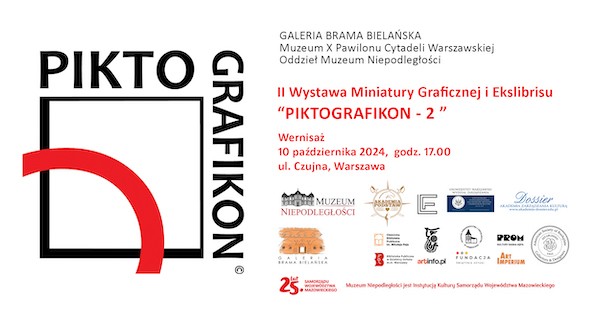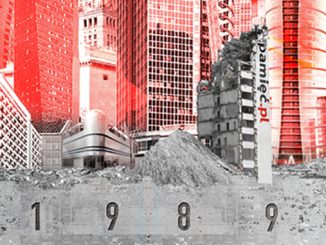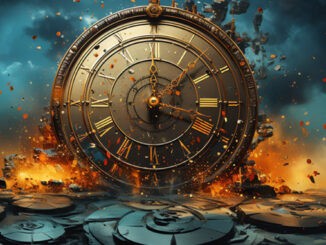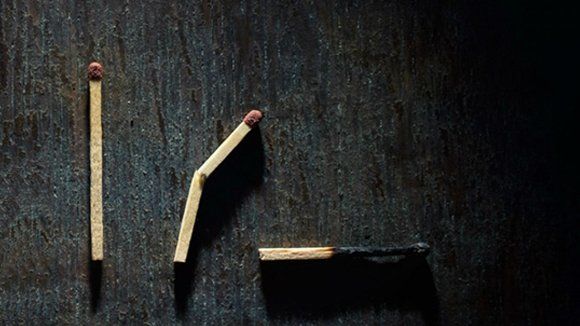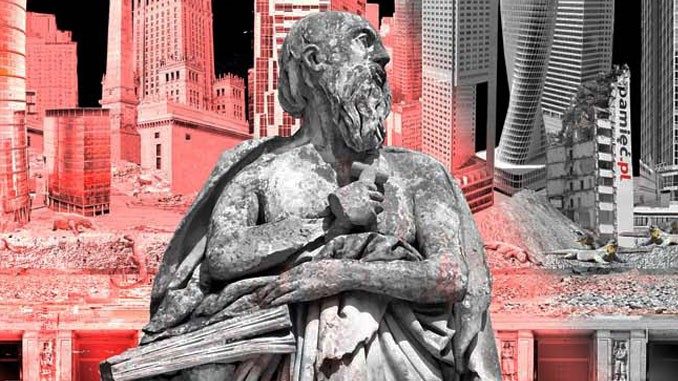
Tematem wystawy są ekslibrisy i miniprinty o tematyce warszawskiej obrazujące zmieniający się styl wizerunkowy i kulturowy Warszawy. Tematem będą spostrzeżenia i własne doświadczenia związane ze zmianami w wyglądzie i przestrzeni naszej stolicy, ale również ze zmianami w charakterze wydarzeń kulturalnych, artystycznych, ekonomicznych i architektonicznych jakie mają miejsce na przestrzeni szczególnie ostatnich lat. Różnorodność, wielokulturowość, otwartość wręcz kakofonia i przenikanie się Sztuki i biznesu jako znak naszych czasów współczesnych w jakim nam przyszło żyć i tworzyć to cechy wizerunku obecnej Warszawy.
Katarzyna Lipska Ziębińska, Kurator wystawy
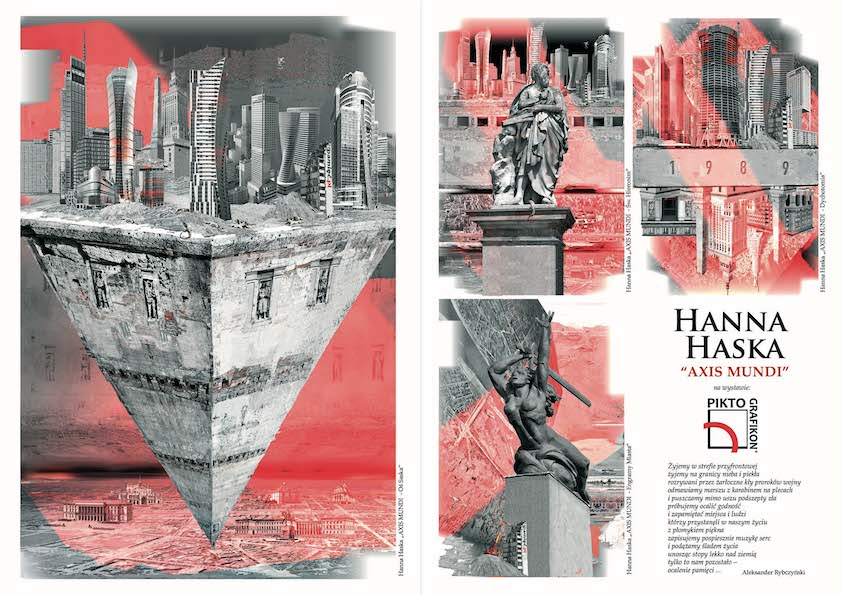
„Axis Mundi” to moja graficzna saga o Warszawie. W tragicznej historii miasta uczestniczyły kolejne pokolenia mojej rodziny. Ja urodziłam się na gruzach popowstaniowej Warszawy lat 50-tych, przy Osi Saskiej. Pola gruzów były miejscem moich zabaw dziecięcych. Gołymi rękami dotykałam rozerwanych fundamentów miasta – kamienie gadały do mnie – otrzymywałam niekonwencjonalne lekcje historii. Obserwowałam jak na ich szczątkach wznoszona była stalinowska infrastruktura osiedli Muranów i Mirów. Tutaj, na przełomie dwudziestego pierwszego wieku rozpoczęła się właśnie przebudowa korporacyjna – wznoszony tzw. „Manhattan Warszawski”. Dzisiaj proces budowy nie traci na dynamice..
“Axis Mundi” is my graphic saga about Warsaw. Successive generations of my family participated in the tragic history of the city. I was born in the ruins of the post-uprising Warsaw of the 1950s, on the Saxon Axis. The fields of rubble were the place where I played as a child. I was touching the city’s torn foundations with my bare hands – the stones were speaking to me – I received unconventional history lessons. I was watching as the Stalinist infrastructures of the Muranów and Mirów housing estates were built on their remains. Here, at the turn of the twenty-first century, corporate reconstruction began – the so-called “Warsaw Manhattan” was being built. Today, the construction process does not lose its dynamics…
Strefa przyfrontowa
Żyjemy w strefie przyfrontowej
żyjemy na granicy nieba i piekła
rozrywani przez żarłoczne kły proroków wojny
odmawiamy marszu z karabinem na plecach
i puszczamy mimo uszu podszepty zła
próbujemy ocalić godność
i zapamiętać miejsca i ludzi
którzy przystanęli w naszym życiu
z płomykiem piękna
zapisujemy pospiesznie muzykę serc
i podążamy śladem życia
unosząc stopy lekko nad ziemią
tylko to nam pozostało –
ocalenie pamięci
która nigdy nie odda się w niewolę resetu
nad głowami słyszymy przelatujące rakiety
ale najbardziej ranią bezwstydne komunikaty
radiowych pozytywek i telewizyjnych terminatorów
trwamy w świecie zasieków widma bomb
śpiewu głupców szaleńców i uzurpatorów
próbujemy wzywać do oporu
wzmocnienia przetrzebionych szeregów
i powstrzymania transportów broni
mało kto słyszy rozpaczliwe wołania
nasze patrole przedzierają się przez mgłę
ciemności i potężniejący hałas nagonki
Aleksander Rybczyński
Frontline Zone
We live in a frontline zone
we live on the border of heaven and hell
torn apart by the voracious fangs of the prophets of war
we refuse to march with a rifle on our backs
and we ignore the whispers of evil
we are trying to save dignity
and remember places and people
who have stopped in our lives
with a flame of beauty
we hastily record the music of hearts
and follow the trail of life
lifting our feet slightly above the ground
only this is left for us –
saving the memory
which will never surrender to the slavery of the reset
we hear rockets flying over our heads
but the most hurtful are the shameless messages
of radio music boxes and television terminators
we remain in a world of barbed wire and the specter of bombs
the singing of fools, madmen and usurpers
we are trying to call for resistance
strengthen the decimated ranks
and stopping weapons transports
few people hear the desperate cries
our patrols break through the fog of darkness
and the growing noise of the persecution
Aleksander Rybczyński
The subject of the exhibition are bookplates and miniprints on the subject of Warsaw, illustrating the changing image and cultural style of Warsaw. The subject will be observations and personal experiences related to changes in the appearance and space of our capital, but also with changes in the nature of cultural, artistic, economic and architectural events that have been taking place over the last few years. Diversity, multiculturalism, openness, even cacophony and the interpenetration of Art and business as a sign of our modern times in which we have to live and create are the features of the image of today’s Warsaw.
